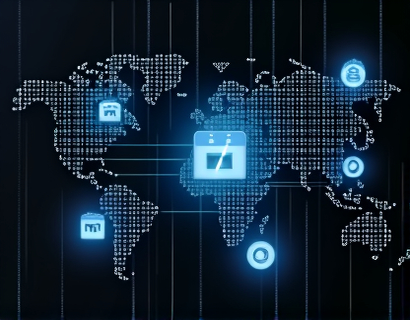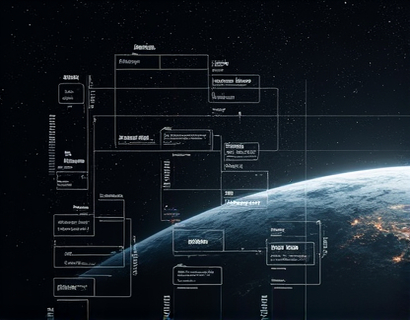Agricultural Software: Transforming Farming Operations with Innovative Solutions
In recent years, the agricultural sector has witnessed a significant transformation driven by advanced software solutions. These innovations are not just enhancing operational efficiency but are also redefining the way farming businesses and professionals manage their operations. The integration of technology in agriculture, often referred to as Agricultural Technology or AgTech, is playing a pivotal role in addressing the challenges faced by the industry, such as climate change, resource scarcity, and market volatility.
Enhancing Operational Efficiency
The primary goal of agricultural software is to streamline farming operations, making them more efficient and less labor-intensive. One of the key areas where software has made a substantial impact is in precision agriculture. Precision agriculture involves the use of technology to optimize field-level management with regard to crop farming. This includes the use of GPS, sensors, and drones to collect data on soil conditions, crop health, and weather patterns. By analyzing this data, farmers can make informed decisions about irrigation, fertilization, and pest control, leading to more efficient use of resources and higher yields.
Another area where software enhances efficiency is in farm management. Farm management software provides a comprehensive platform for managing various aspects of farm operations, from planting and harvesting to inventory and finances. These platforms allow farmers to track equipment maintenance, monitor crop growth, and manage supply chains all from a single interface. This integration reduces the time spent on manual tasks and minimizes the risk of errors, thereby increasing overall productivity.
Improved Data Management
Data management is a critical component of modern farming, and agricultural software has revolutionized how farmers handle and utilize data. Traditional farming relied heavily on manual record-keeping, which was time-consuming and prone to errors. With the advent of cloud-based farming software, data can be collected, stored, and analyzed in real-time. This shift to digital data management not only ensures accuracy but also provides farmers with immediate insights into their operations.
For instance, data analytics tools within farming software can process large volumes of data to identify trends and patterns. This information can be used to predict crop yields, optimize resource allocation, and forecast market demands. By having access to real-time data, farmers can make timely decisions that can significantly impact their bottom line. Moreover, the ability to store data in the cloud ensures that information is accessible from anywhere, facilitating better collaboration among team members and stakeholders.
Informed Decision-Making
The ability to make informed decisions is crucial for the success of any farming business. Agricultural software empowers farmers with the tools they need to make data-driven decisions. Decision support systems (DSS) integrated into farming software provide farmers with actionable insights based on historical and real-time data. These systems can simulate different scenarios, helping farmers evaluate the potential outcomes of various strategies before implementing them.
For example, a DSS might analyze weather forecasts, soil moisture levels, and historical crop performance to recommend the best planting dates and crop varieties. This level of precision in decision-making not only increases the likelihood of successful harvests but also helps farmers adapt to changing environmental conditions. Additionally, the use of machine learning algorithms can further enhance decision-making by identifying complex patterns and providing predictive analytics.
Sustainability and Resource Management
Sustainability is a growing concern in the agricultural sector, and software solutions are playing a vital role in promoting sustainable farming practices. By optimizing resource use, agricultural software helps reduce waste and minimize the environmental impact of farming operations. Precision irrigation systems, for instance, use data from soil moisture sensors to deliver water only where and when it is needed, reducing water consumption and preventing over-irrigation.
Similarly, software can help manage fertilizer and pesticide applications more effectively. By analyzing soil tests and crop health data, farmers can apply these inputs at the right time and in the right amounts, reducing chemical usage and preventing runoff into nearby water bodies. This not only benefits the environment but also reduces costs for farmers. Furthermore, some software solutions offer carbon footprint tracking, helping farmers measure and reduce their environmental impact.
Market Access and Supply Chain Optimization
Agricultural software is not only transforming operations on the farm but also improving market access and supply chain management. For farmers, connecting with buyers and distributors efficiently is crucial for maximizing profits. E-commerce platforms integrated with farming software allow farmers to sell their products directly to consumers or wholesale buyers, expanding their market reach. These platforms often include features such as order management, payment processing, and customer relationship management, streamlining the entire sales process.
Supply chain optimization is another area where software brings significant benefits. By integrating with logistics providers, farming software can help farmers manage the transportation and storage of their products more effectively. Real-time tracking of shipments ensures that produce reaches the market fresh and on time. Additionally, software can help identify bottlenecks in the supply chain, allowing farmers to take proactive measures to resolve issues and improve efficiency.
Challenges and Considerations
While the benefits of agricultural software are clear, there are several challenges that farmers and agricultural professionals must consider. One of the primary concerns is the initial cost of implementing these systems. High-quality software solutions can be expensive, and not all farming operations may have the budget to invest in advanced technology. However, the long-term benefits in terms of increased efficiency and productivity often justify the investment.
Another challenge is the need for technical expertise to effectively use and maintain the software. Farmers and their staff may require training to fully leverage the capabilities of the software. This is where partnerships with technology providers and agricultural extension services become important, offering support and training to ensure successful adoption.
Data security and privacy are also critical considerations. With sensitive information stored in the cloud, farmers must ensure that their data is protected from cyber threats. Reputable software providers should implement robust security measures and comply with relevant data protection regulations to address these concerns.
Future Trends in Agricultural Software
The future of agricultural software looks promising, with several emerging trends set to further transform the industry. One such trend is the integration of artificial intelligence (AI) and machine learning (ML) to enhance predictive analytics and automation. AI can process vast amounts of data to identify patterns and make predictions with high accuracy, further improving decision-making and operational efficiency.
Another trend is the development of Internet of Things (IoT) devices specifically designed for agriculture. IoT sensors can monitor a wide range of parameters, from soil moisture and temperature to livestock health, providing continuous data streams that can be analyzed in real-time. This level of connectivity and monitoring enables more precise and responsive management of farming operations.
Additionally, the rise of blockchain technology in agriculture holds potential for enhancing transparency and traceability in the supply chain. By recording transactions on a blockchain, farmers can provide verifiable proof of origin, quality, and sustainability, which is increasingly important to consumers and regulatory bodies.
Conclusion
The integration of advanced software solutions in agriculture is revolutionizing the way farming operations are managed. From precision agriculture and data management to informed decision-making and supply chain optimization, these technologies are addressing the key challenges faced by the industry. As the agricultural sector continues to evolve, the role of software will become even more critical, driving innovation and sustainability in farming practices. For businesses and professionals in the agricultural sector, embracing these technological advancements is not just an option but a necessity for staying competitive and thriving in a rapidly changing world.










































